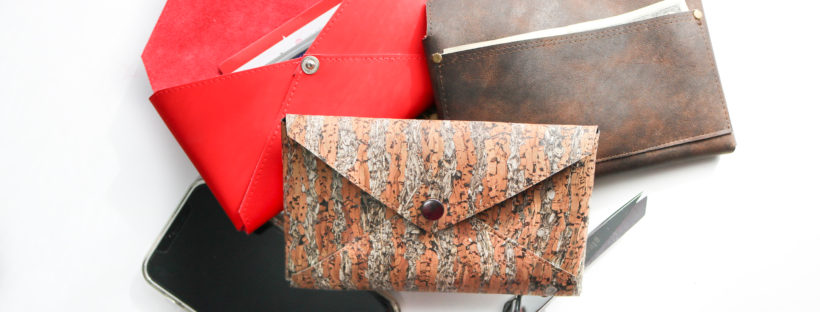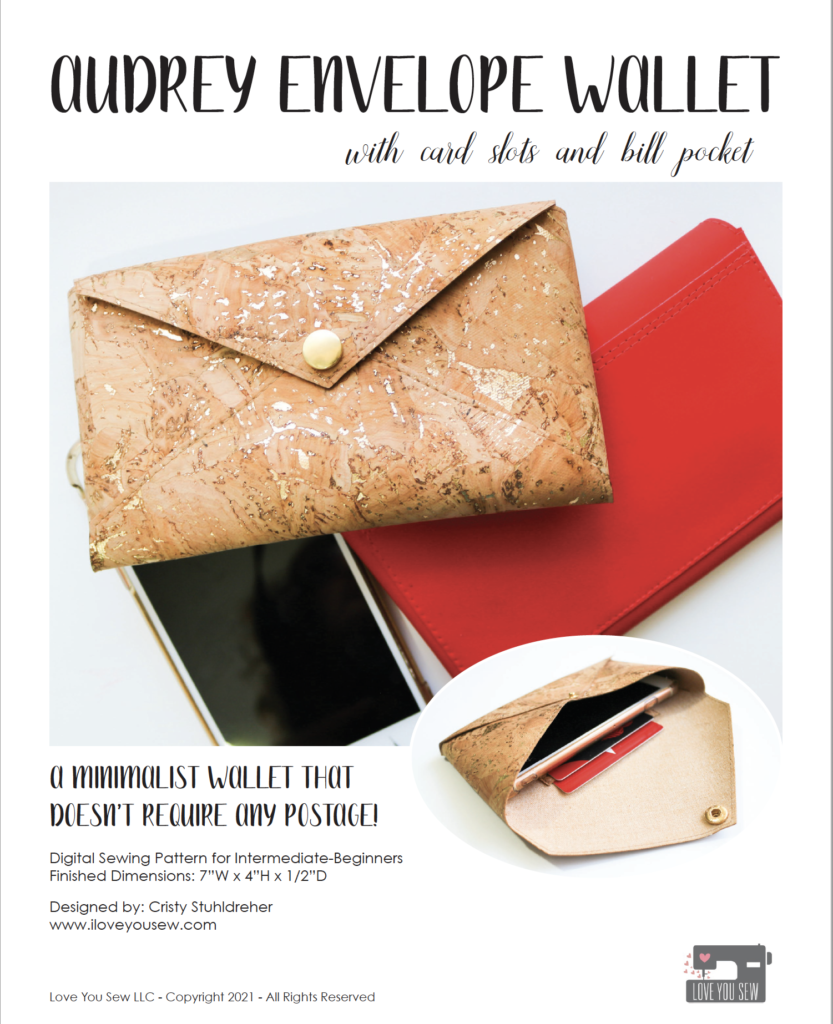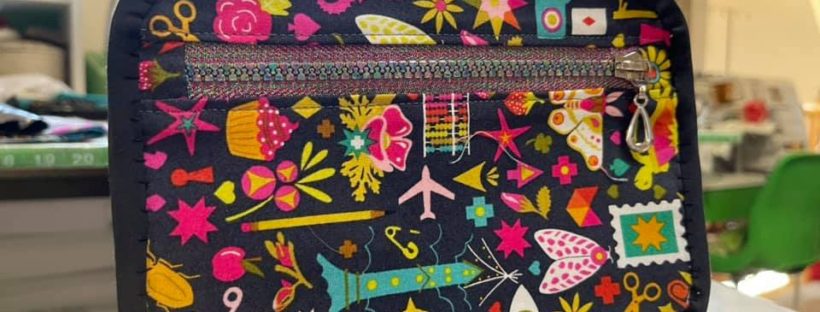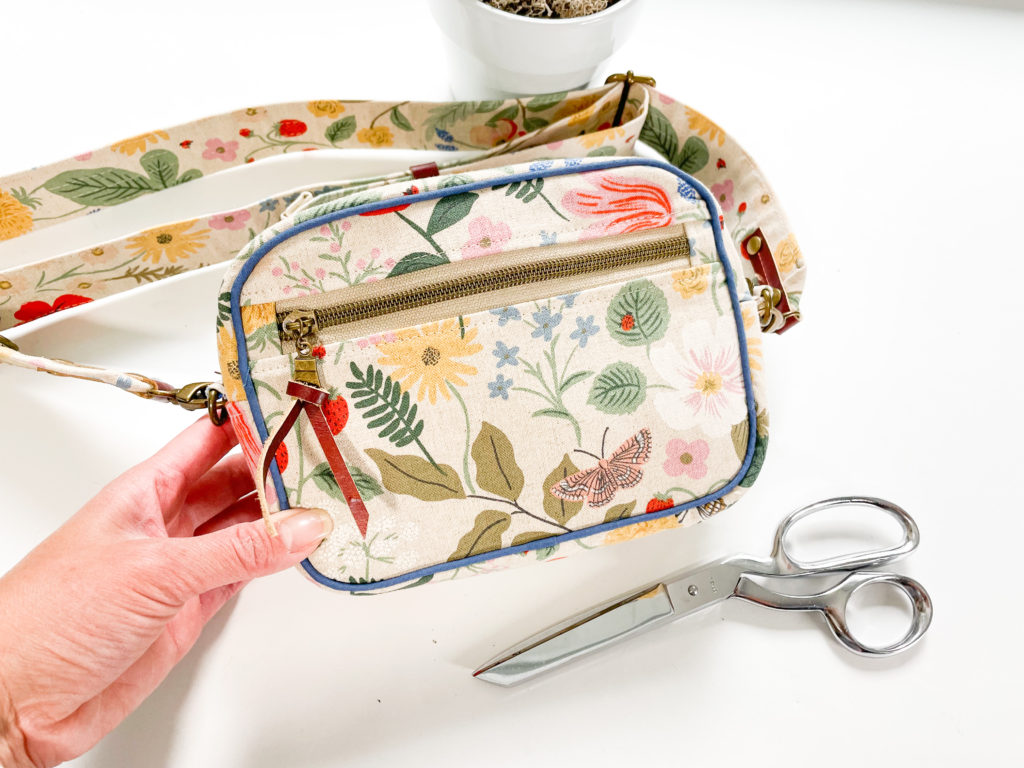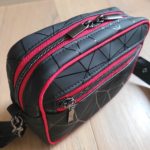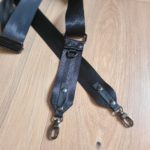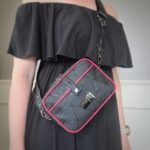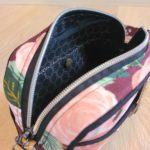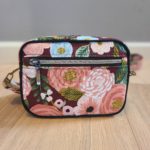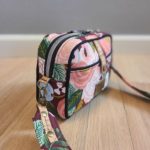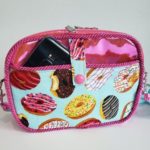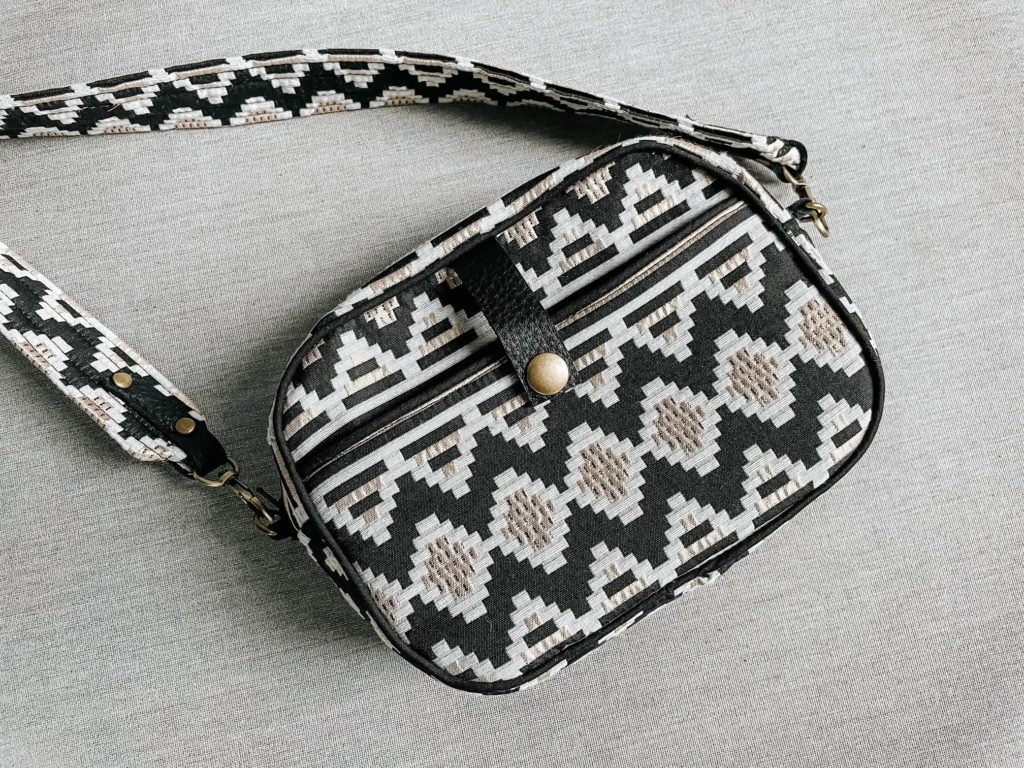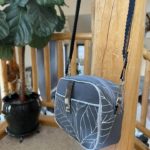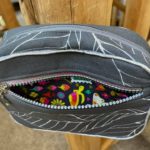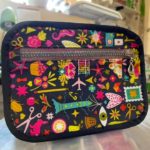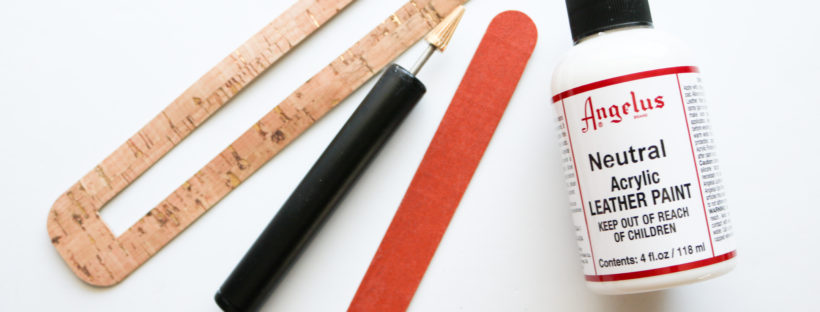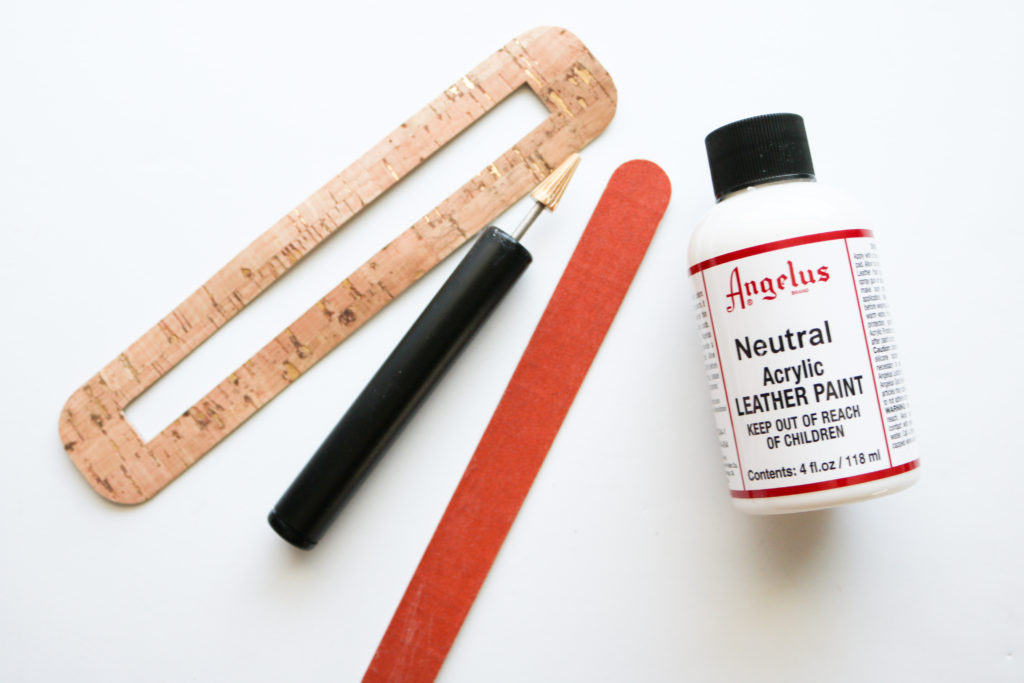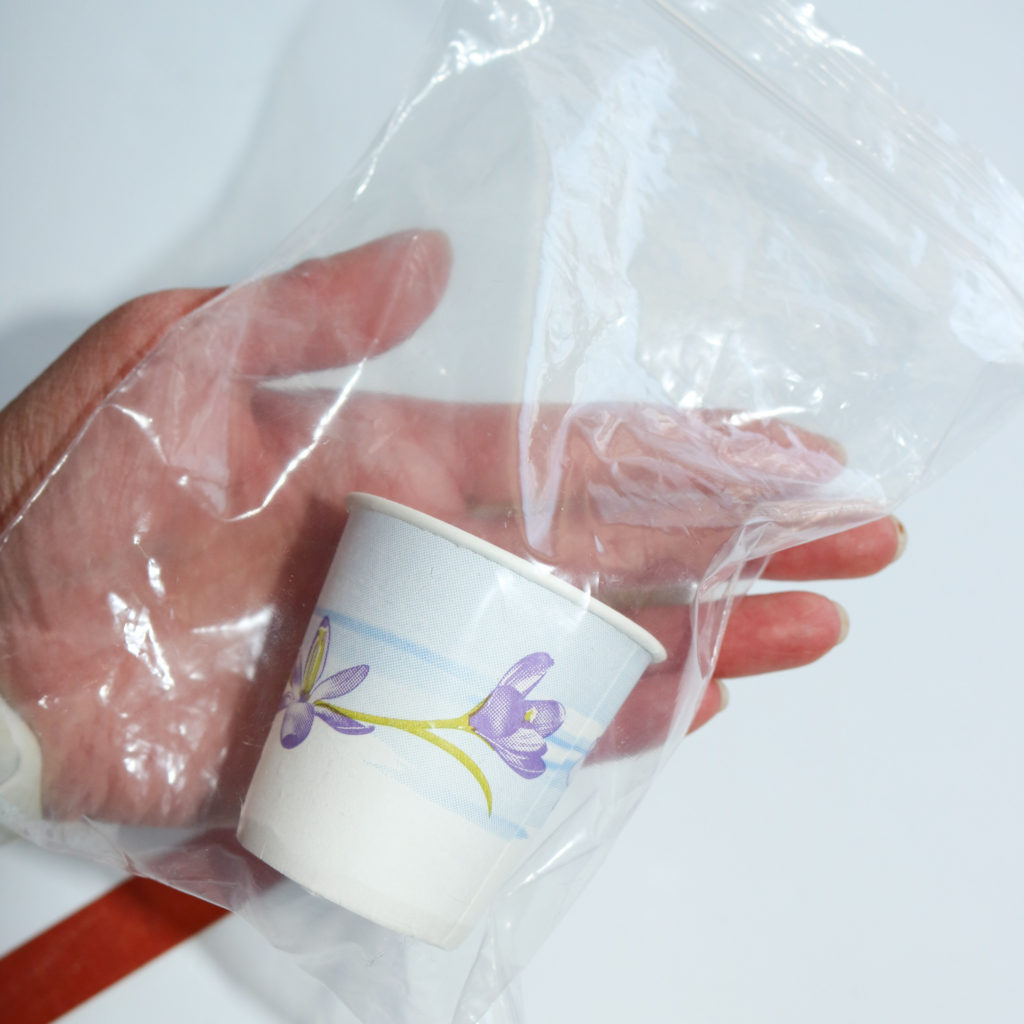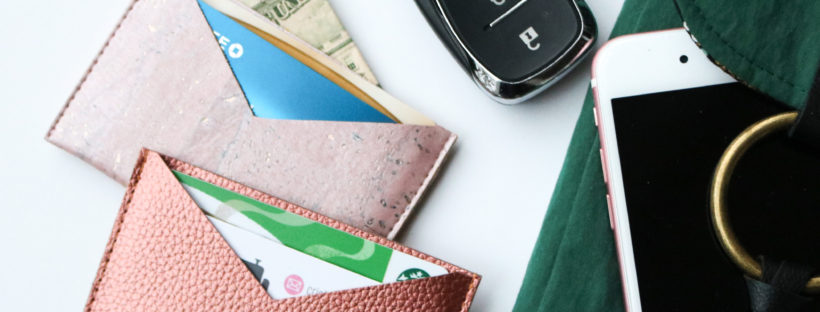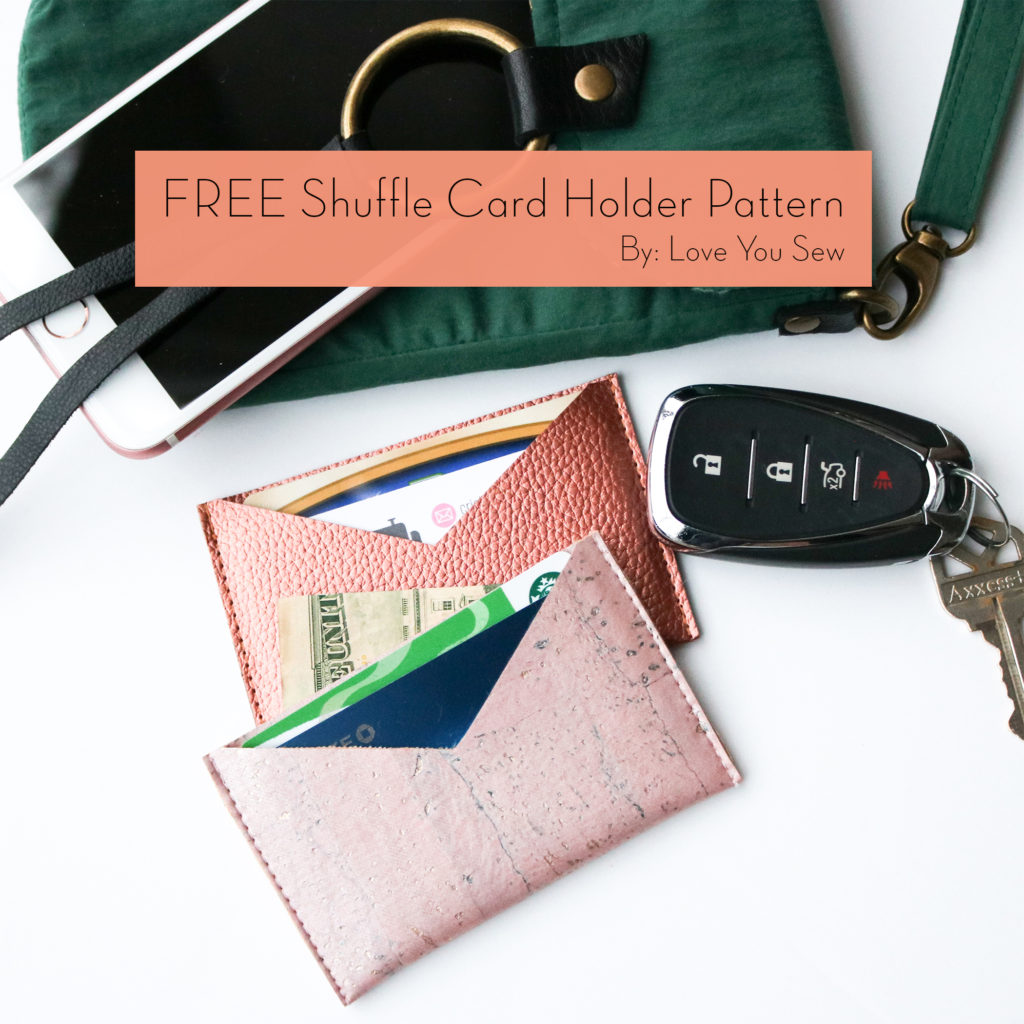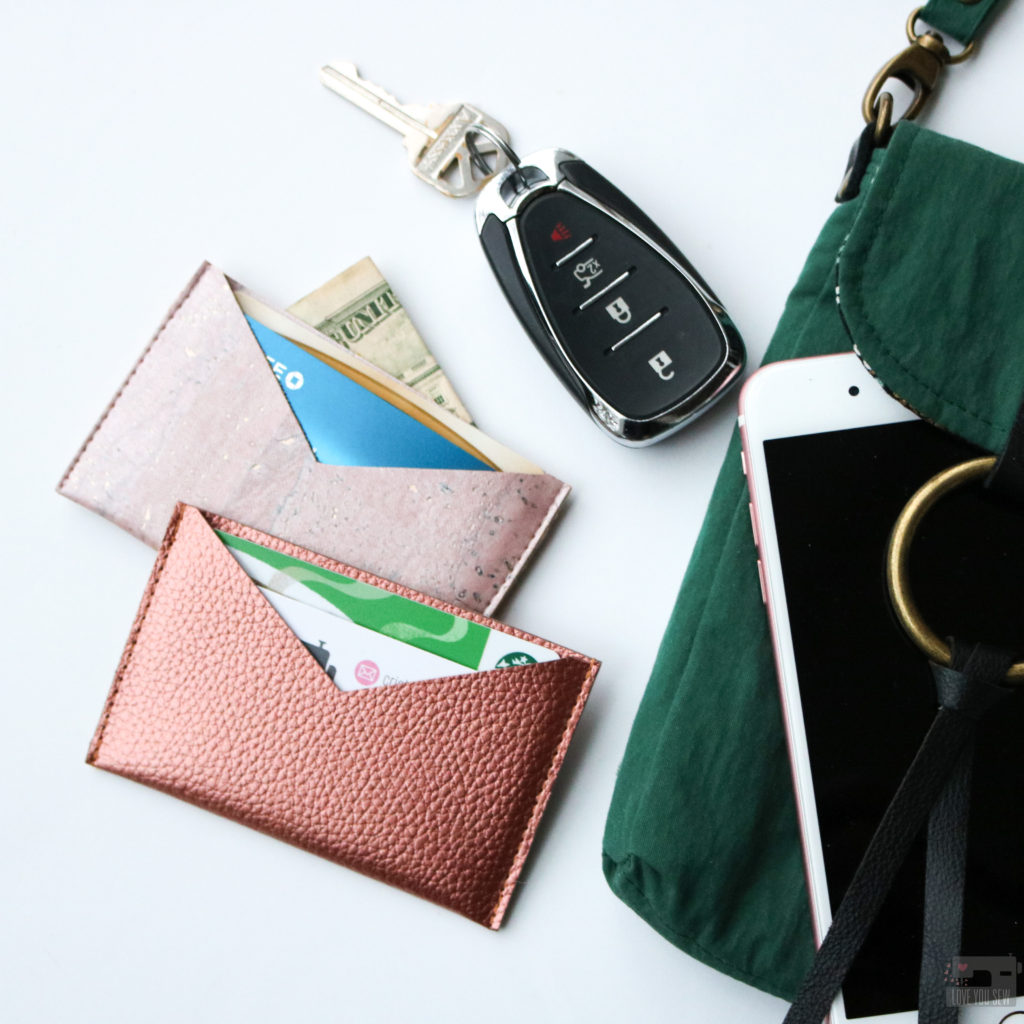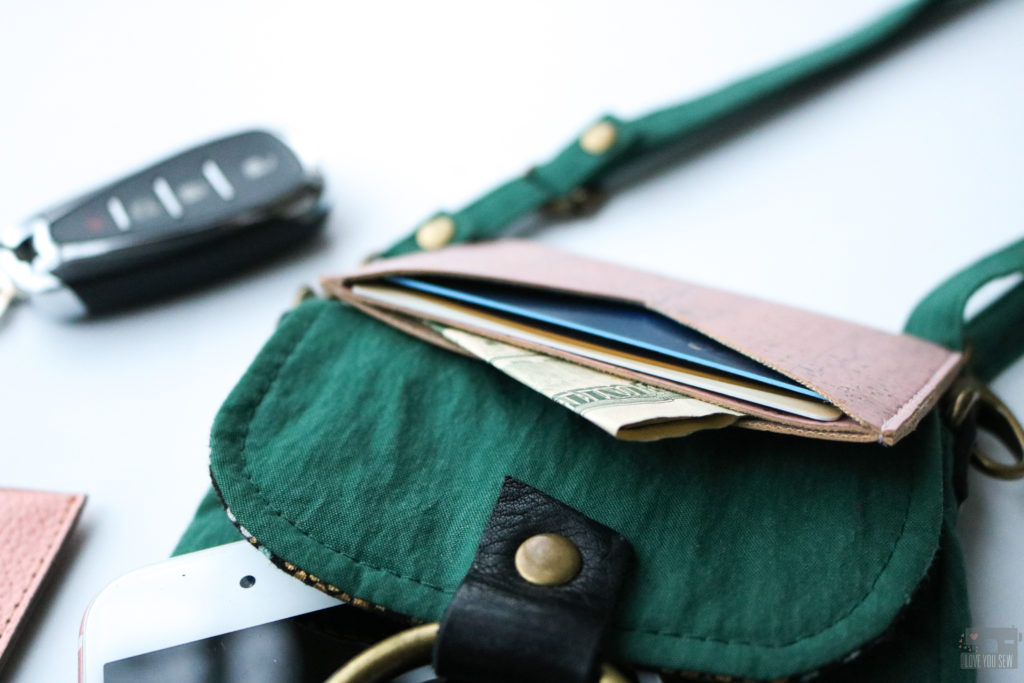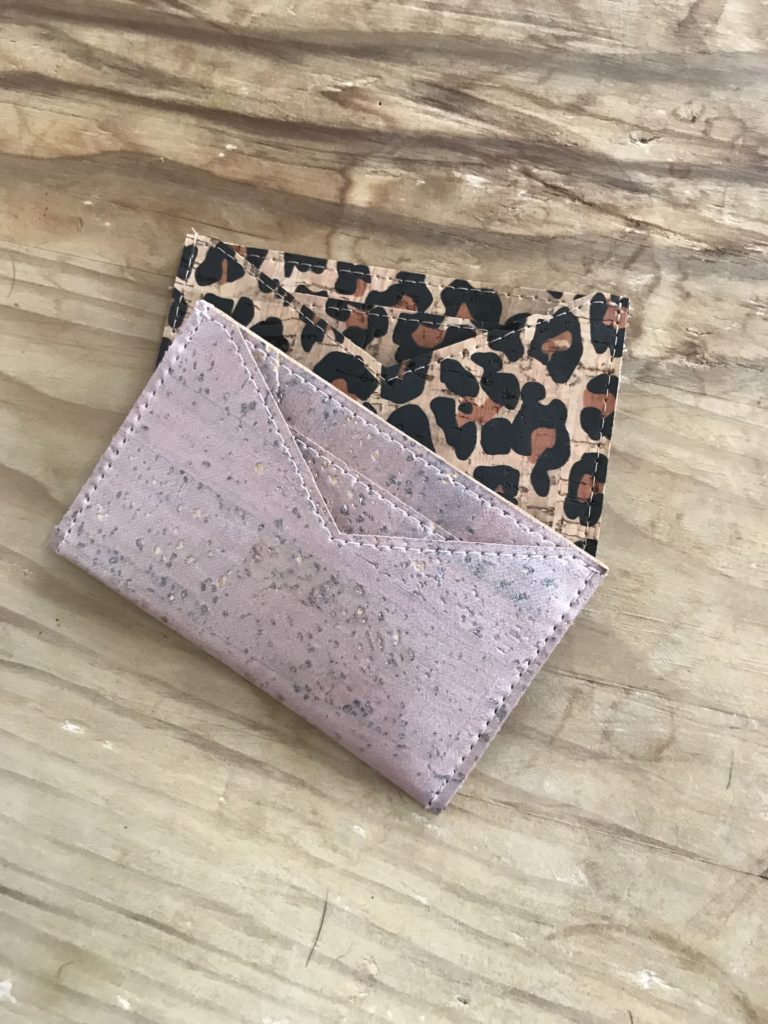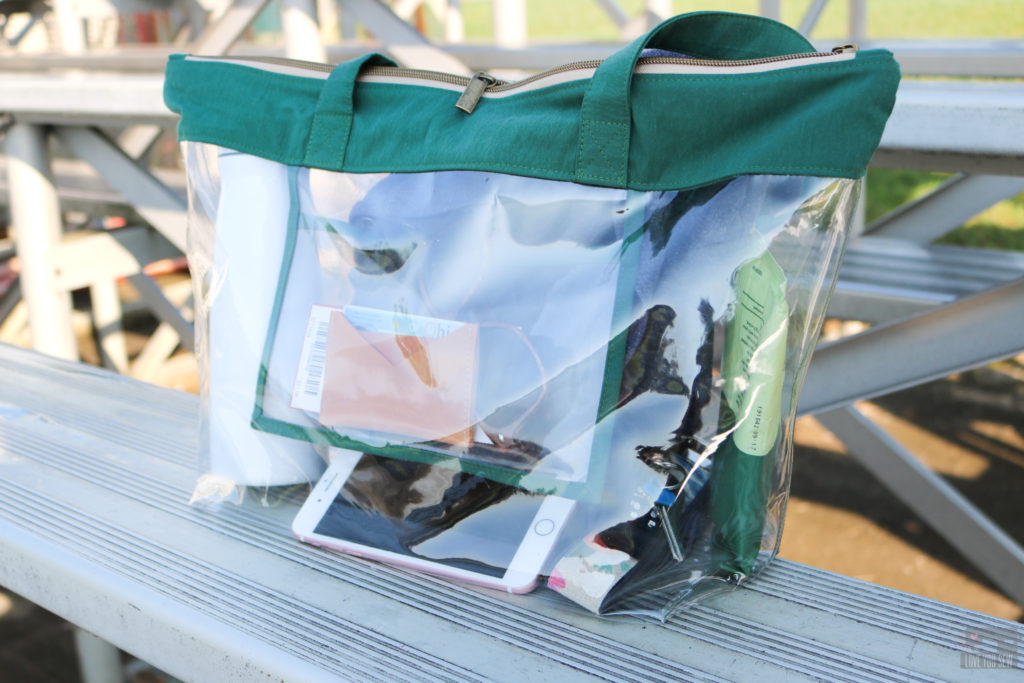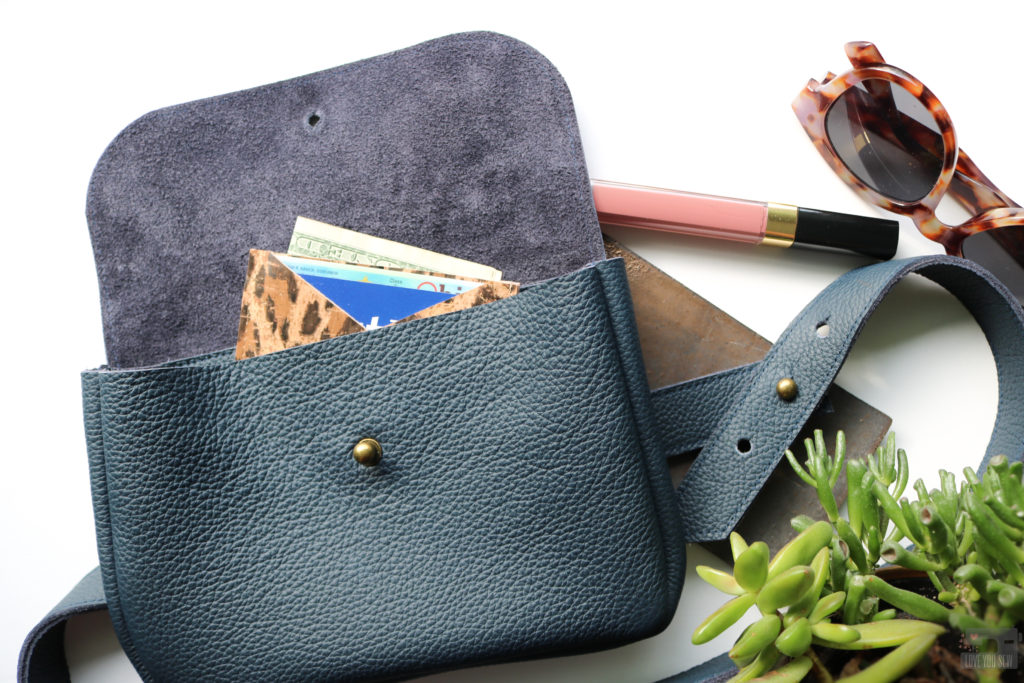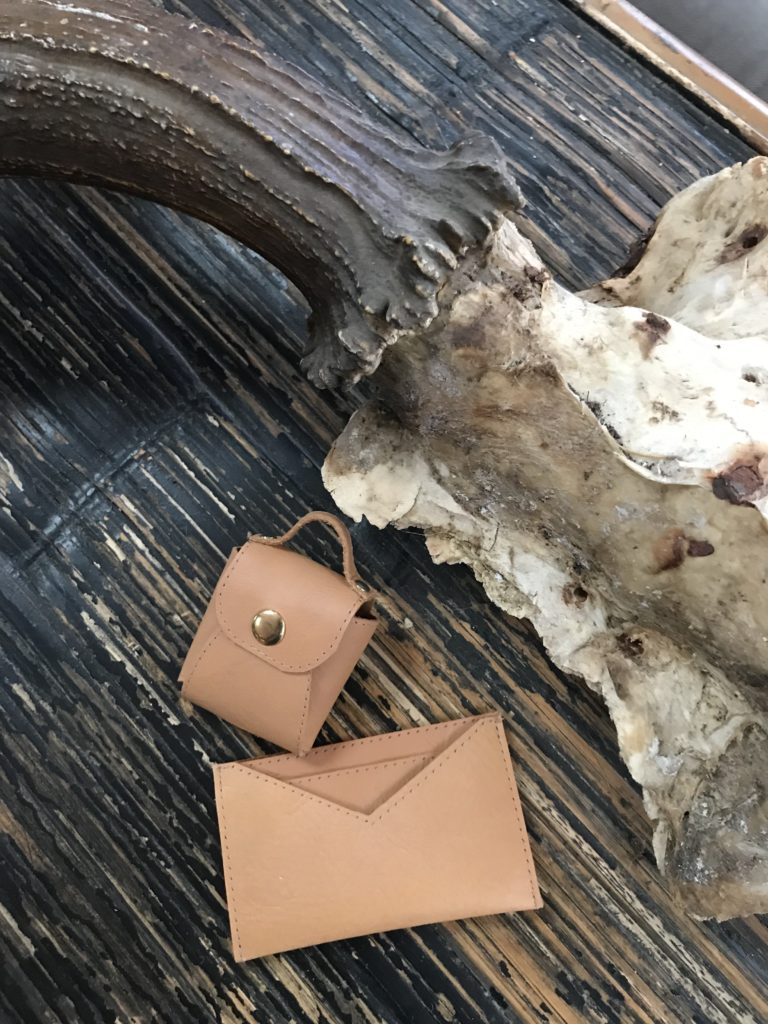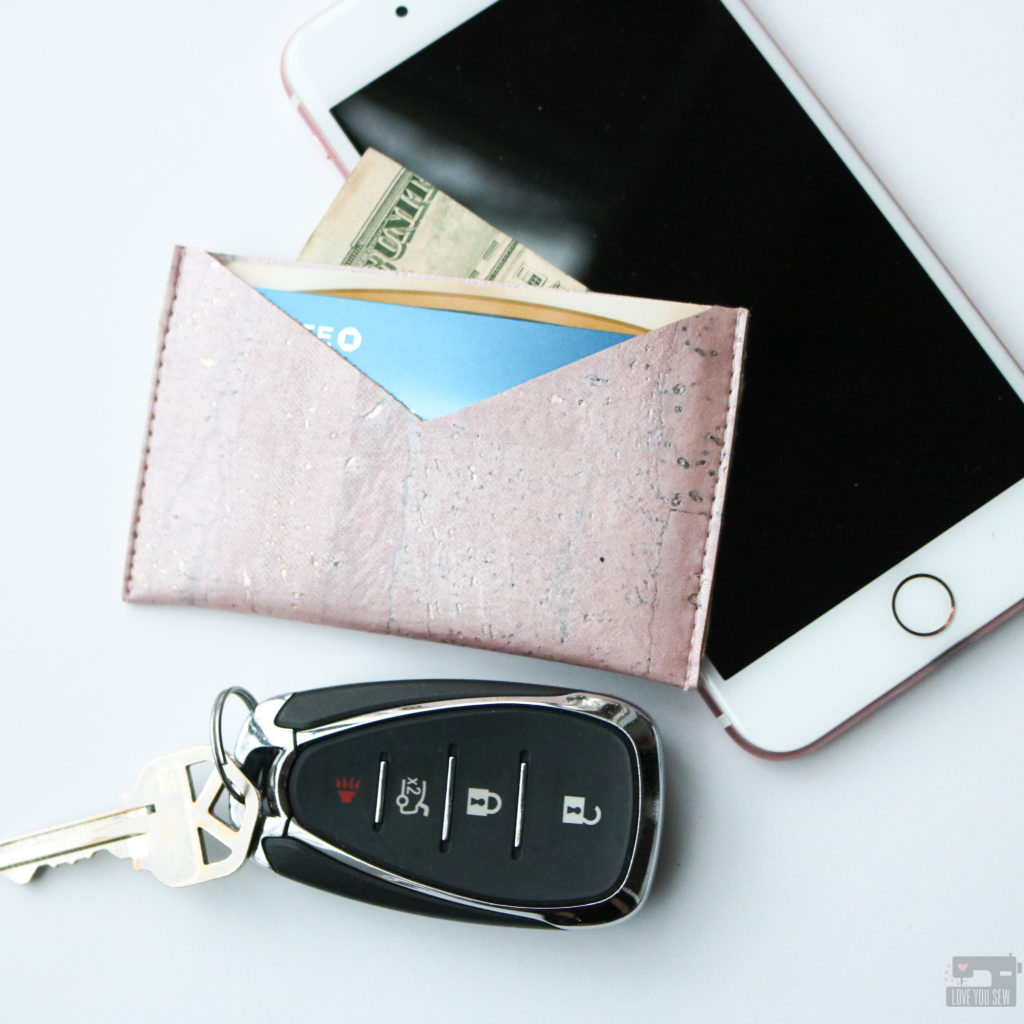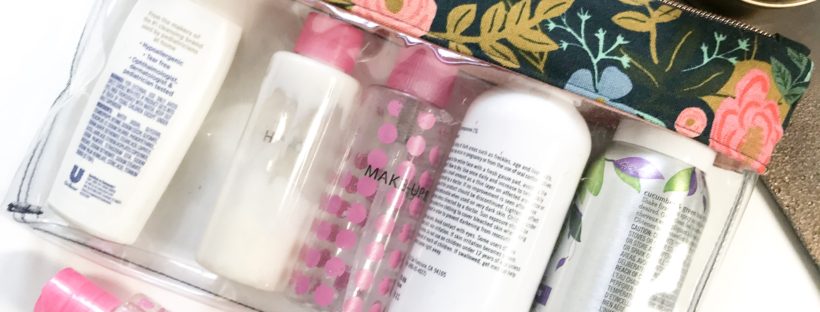The Audrey Envelope Wallet is a quick and easy project with minimal sewing and tons of style! It has the your classic envelope shape, but also features three card slots and a large slip pocket for bills (which also doubles to hide your stitching.)
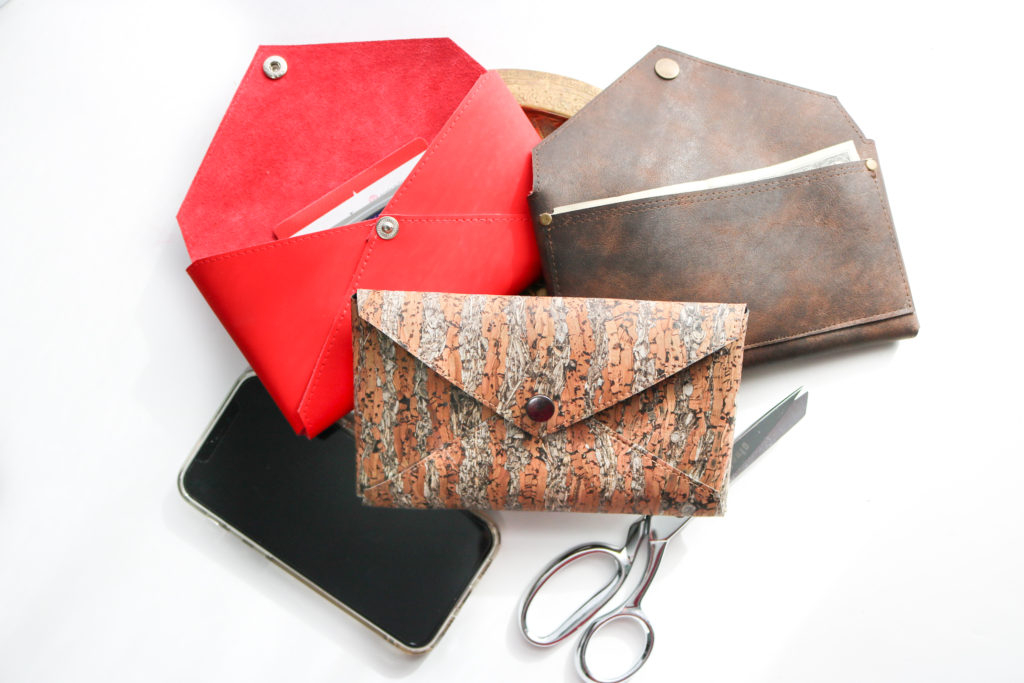
After designing the Christine Sling, I found myself using that bag almost all the time (which also happens after every bag launch…I can’t help it!) While my “regular” full wallet could fit, it didn’t leave much room for anything else. I was able to get away with the Shuffle Cardholder for a long time. But in some recent situations at sporting events, I felt like I could lose the small cardholder since I was constantly in and out of the bag. So I needed something in between.
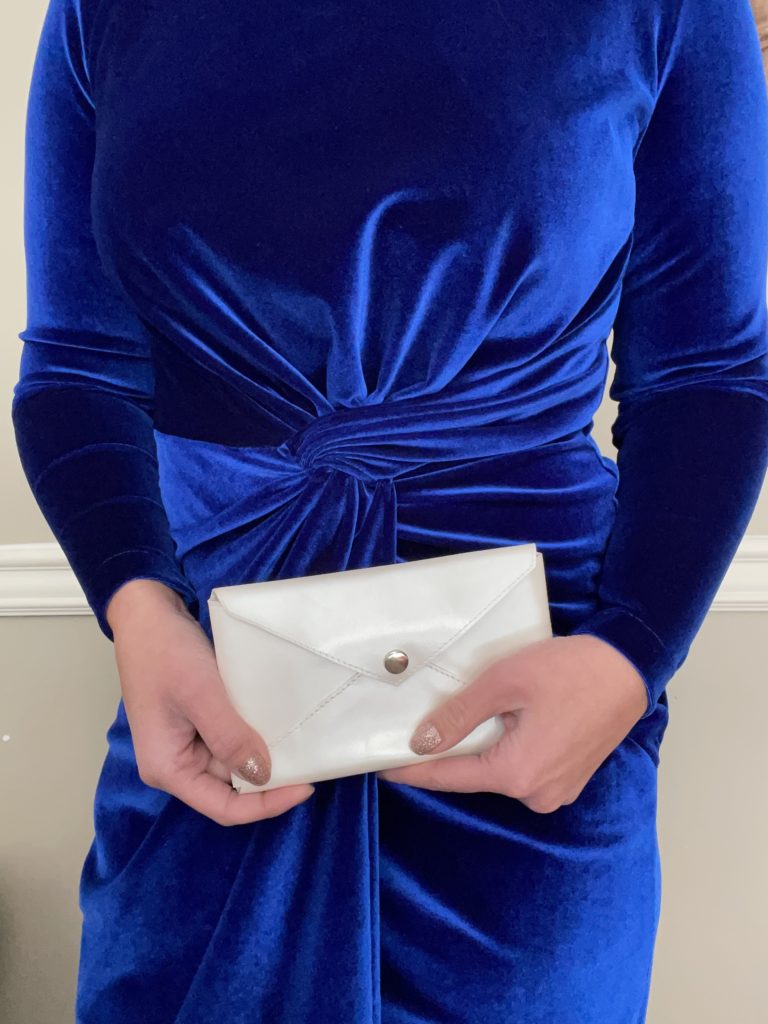
Inspiration
I taught a leather stamping class years ago at a local art studio as a social night out…but with hammers! I used a smaller envelope design and had the students stamp words onto the wallet and onto the wristlet strap we created together. The wristlet was pretty cute, but too small for my needs. I knew back then, the envelope design needed to be bigger for more functionality and adding basic wallet card slots and a pocket for bank notes was needed.
As you know, I really like clean lines and classic styling to most of my bags. I was really drawn into the simplicity of the envelope shape and how something so functional could be made with limited materials — HELLO stash buster! With the holidays approaching, I love having a gift that can have an impact (especially in some gorgeous leather) but not take a whole week to make. Time is precious right now!
It only seems proper that this chic compact wallet be named after my niece, Audrey. She is a vibrant young woman is likes to be out on the town and is definitely game to join any adventure. Audrey is lots of fun to be with and to always have around. She lives all the way out on the west coast, so I definitely miss her a lot! She also happens to be engaged with a wedding planned for next summer. I already know I will HAVE to make a clutch with this design just for the occasion!.
Fabric
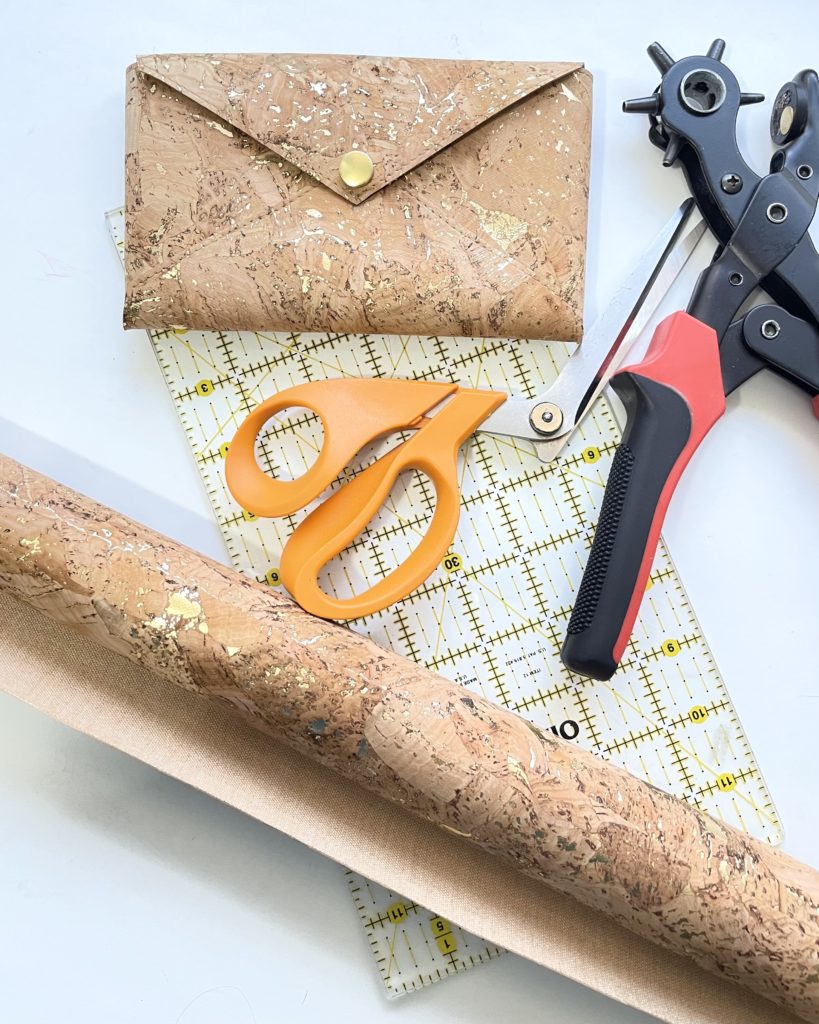
This pattern is written for fabrics which can be left with a raw edge without any additional finishing required. This includes leather, vinyl and cork. While these substrates can be on the pricey side, the Audrey Envelope Wallet requires very little in material. If there is no direction to your print or grain, you just need over 1 sq ft of fabric. This makes it SO great for using up old scraps or upcycling from an old jacket.
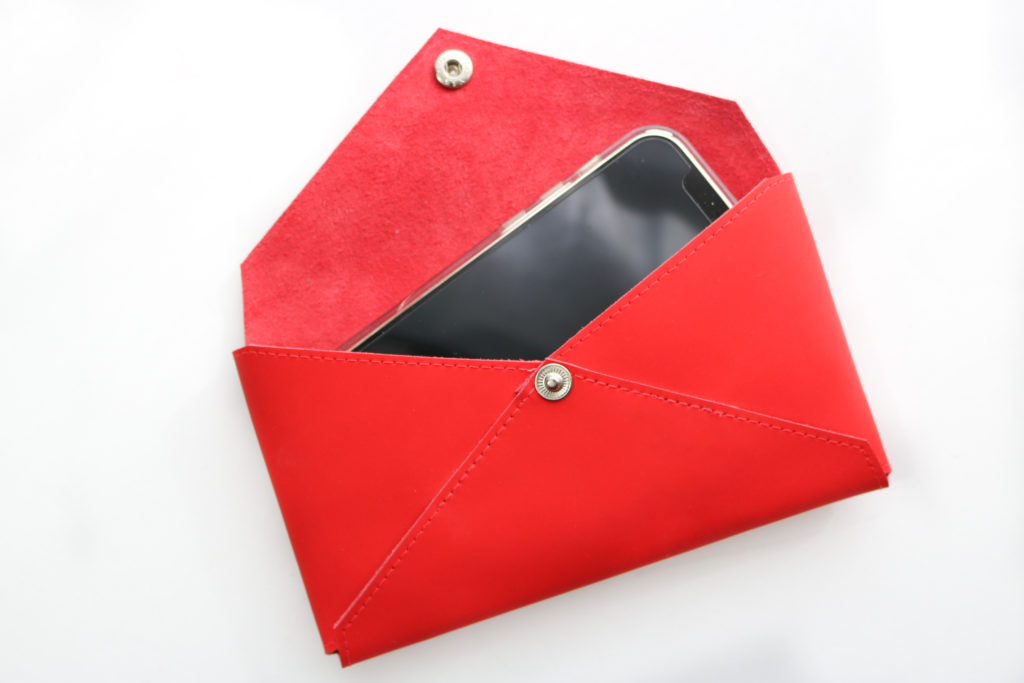
On the cover page, I used a fun Gold-Fleck Cork from Cork and Cloth. It’s a great high-quality Portuguese cork…I would recommend staying away from any of the cheaper imitations you find at the big box stores. They tend to flake more than the ones from Portugal. The other wallet on the cover page (and the one featured in the instructional video) features a Red Matte Firm Temper Leather from Measure Fabrics. As of the publication of this post, the red version is sold out, but there is a gorgeous cobalt blue hide that’s ready for a maker. I really loved working with this leather given it’s super smooth finish and firm hand. It gives the wallet such a nice shape, even when completely empty!
HARDWARE
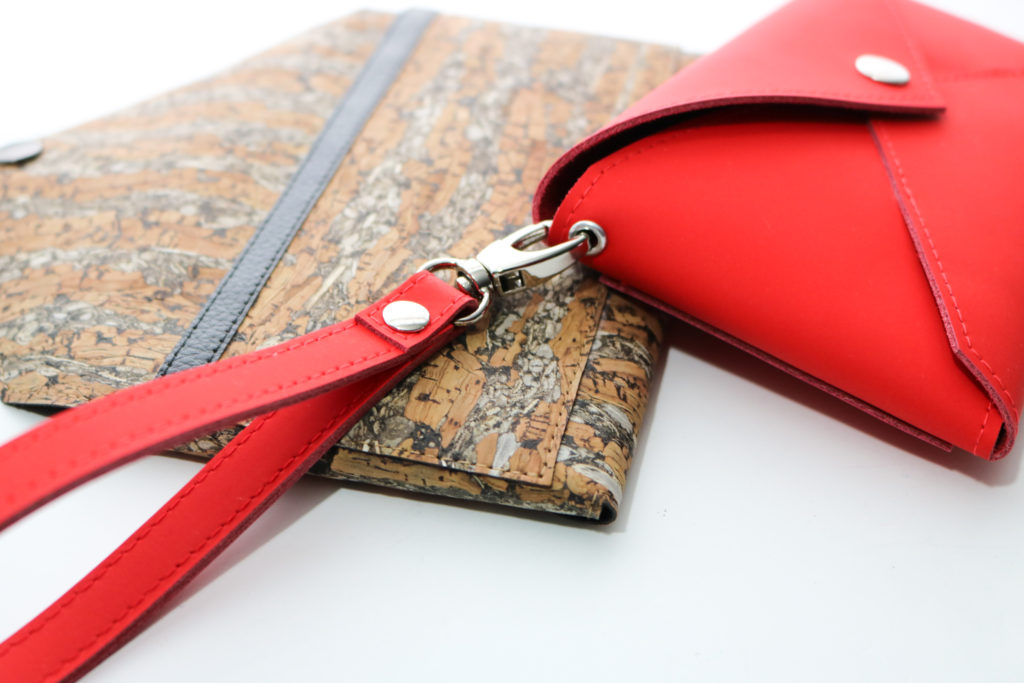
Hacking Ideas: Add a wristlet strap or a contrasting strip to the back pocket
Besides using little material, you only need one fastener for the whole wallet. In the video and the pattern instructions, I used a set of snaps, but you can easily substitute them for something you have on-hand. A small turn lock or even button studs would look great with this bag.
As I was playing with the wallet, you can also add an eyelet for a wristlet strap as well. These are not part of the pattern, but can be easily added for more versatility as a wristlet. You can even change the card slots with a contrasting fabric or add rivets to help secure the pockets. There are so many ways hardware can change up the look of Audrey.
Supplemental Video
Since this is a pretty simple pattern of just 6 pages, I already filmed a video to help with construction. Since the video is for public viewing, you will still need the pattern template for cutting and the instructions for specific measurements. I hope you enjoy the extra resource to help you through sewing!
I hope all of you enjoy this quick and easy pattern as much I had in developing it! Who would you gift an Audrey Envelope Wallet to this holiday season?
Happy Sewing!
Cristy
This post may contain affiliate links. You can read my disclosure here.
